One of the easiest ways to add flavour to plant based dishes is using stock instead of water. And, if you are making dishes like soup or risotto, stock is a major ingredient. Commercial stocks and powders tend to be loaded with salt. So, the best way to avoid the added salt is to make stock yourself.
Of course, you could make stock using whole vegetables, but to me this seems a waste. You would think that eating a whole food plant based diet would lead to less vegetable scraps, seeing as we don’t peel many vegetables. However, in my experience there are still a tonne of scraps that can be stored and periodically turned into stock.
PREPARATION
Collect together any suitable vegetable scraps, and store these in the fridge (or freezer, if you have room). Store them in an air tight container or plastic bag, so they stay fresh.
I usually make stock about once a week. This timing works well, as it’s long enough for me to collect enough scraps, yet quick enough to use them before they start to go off.
Collect the scraps from these vegetables:
- Onions – the ends and outer layers, some skin is ok
- Spring onions – roots, tops
- Broccoli, Cauliflower – stem, or stem peelings (if eating the stem)
- Asparagus – woody ends
- Greens, e.g. silverbeet, spinach, lettuce – the stalks, or unwanted leaves
- Celery – leaves and stalk ends
- Carrots – ends, skin if peeling
- Mushrooms – stalks
- Tomatoes – core, if removing
- Courgette/zucchini – ends
- Herbs – stalks, any unused leaves
Avoid the scraps from these vegetables, as they don’t improve the taste, or they can make the stock look murky:
- Capsicum/peppers
- Potatoes
- Kumara
- Pumpkin
- Beetroot, red cabbage, unless you want pink stock!
METHOD
Add the scraps to a large stockpot, then fill the pot with water so that the veges are almost covered. The veges will reduce in size once you start cooking, so err on the side of too little water. The stock flavour will be best if it is not too diluted.
At this point you might like to add flavour enhancers, depending on what you like, and what you have on hand. My favourites are:
- fresh herbs – stems and leaves
- bay leaf
- dried mushrooms
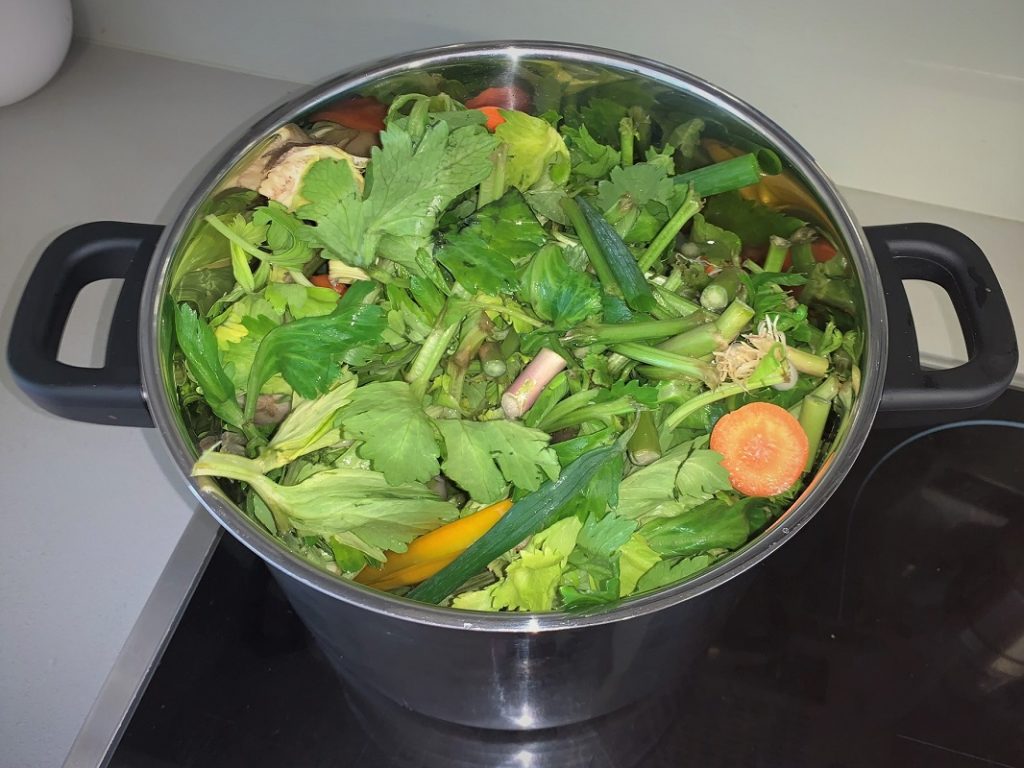
to make Vege Stock.
Cover the pot with a lid, then heat on high until the water is boiling. Turn the heat down, and allow the vegetables to simmer for about half an hour (or more, if you like). The liquid will reduce slightly and change colour, as the cooked vegetables release their flavour.
Once you are happy that the stock has cooked enough, take it off the heat and allow it to cool for a while. This will make handling it easier.
Decant the stock from the pot into a jug with a sieve placed on top. If you leave the lid mostly covering the pot, this will contain most of the cooked veges. The sieve will catch any small pieces that escape the pot.
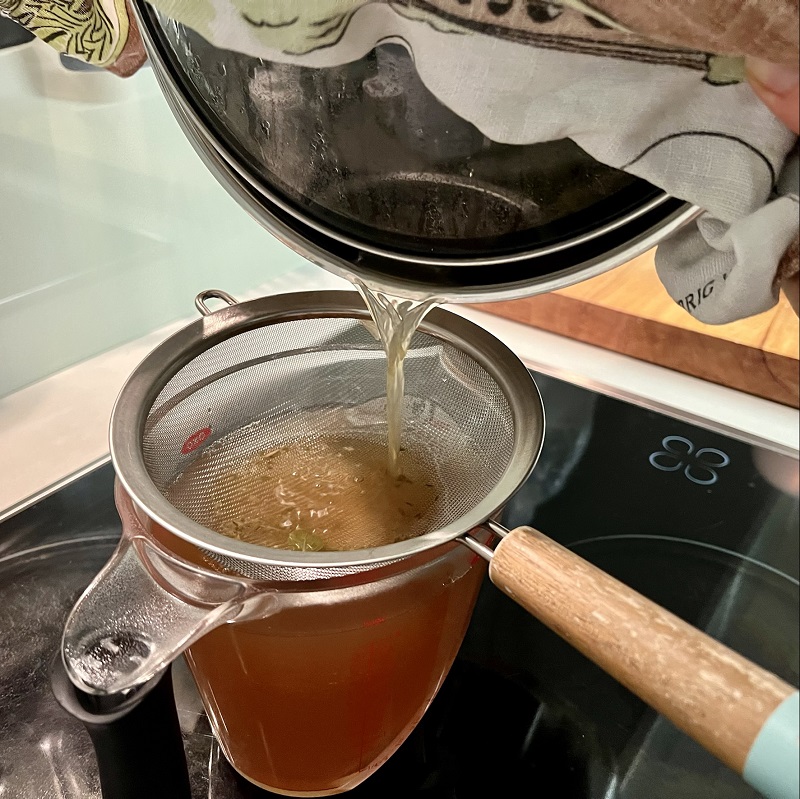
I find it easiest to store the stock in bottles, as these fit in the fridge best. I find that one large stock pot of vege scraps will fill two 1l bottles.
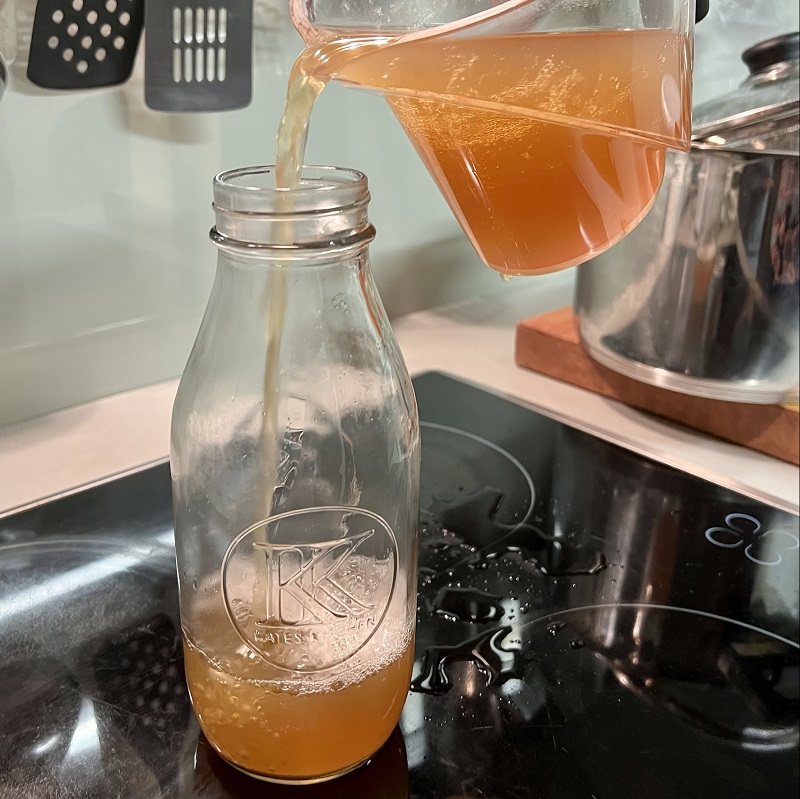
Discard the remaining vege scraps. We have a bokashi bin, and they work really well there. They could also go on your compost heap, or your food waste bin, if you have one.
ENJOY!
Use your stock during the week, while you collect scraps for your next batch. If it looks like you might not get to using it, you can always freeze it in icecube trays and then store the cubes in bags in the freezer.
I hope you enjoy making your own stock. Please let me know of any other vege scraps you like adding to your own stock. Either leave a comment, or tag me in a post on instagram @abundantlyclear.nz.
Abundantly yours!
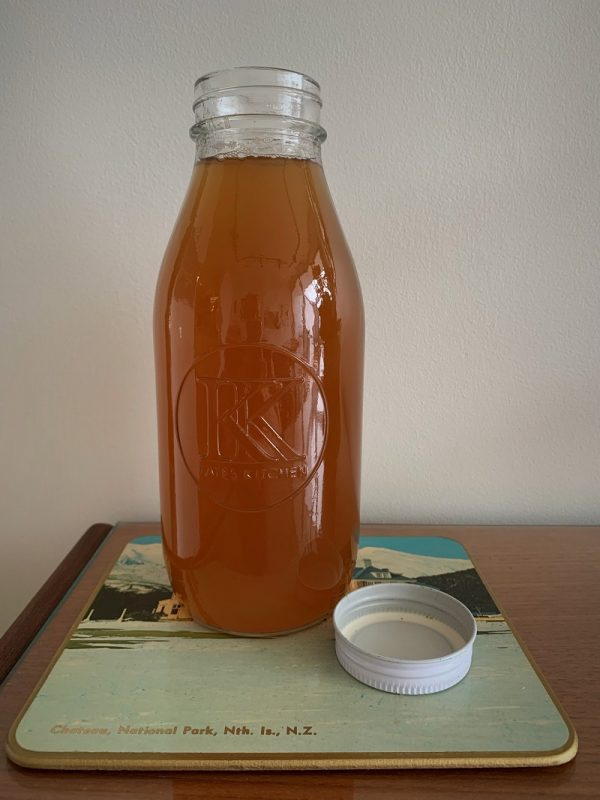






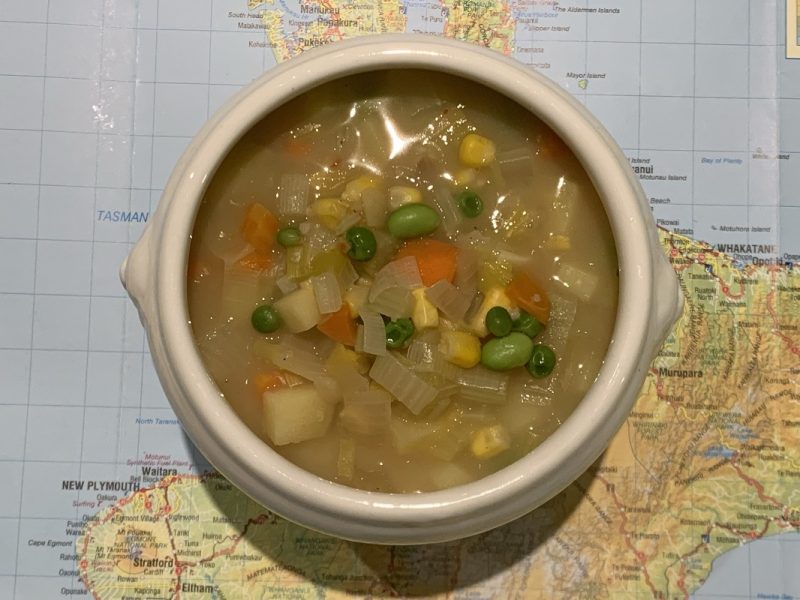
Recent Comments